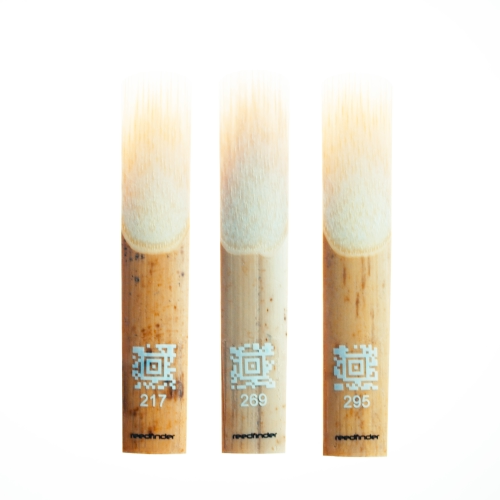Role of the Clarinet in the 18th Century
Discover the challenges faced by clarinetists and instrument makers in the 18th century, and how they worked to overcome them. Explore the evolution of the clarinet and its changing role in music.
Problems with the clarinet in the 18th century
Until the mid-18th century, most clarinets only had two keys. The range of the instrument extended from F3 to G4 through the tone holes only. Pressing the upper key could produce a4, and pressing both the upper and lower keys could produce B4. By overblowing, the notes C5 to G6 could also be played. However, B4 was rarely used due to poor intonation. Therefore, a third key was later added to the instrument, which also changed the lowest note to E3. [1]
There were numerous problems with the 18th century instrument. The tone quality of the forked notes differed from the others, and the intonation of certain notes was not good. This had several reasons.
- Firstly, the technical level of musical instruments did not allow for chromatic playing. For modified tones, the imperfection of the instrument often had to be corrected by pulling out the mouthpiece or changing the mouth position.
- Secondly, the clarinet overblows in the twelfth, not the octave. Therefore, several completely different notes belong to one tone hole.
This has made it extremely difficult to create a clarinet with perfect intonation (even to this day).
The solution
Instrument makers produced differently pitched instruments to circumvent the intonation difficulties by exchanging them. Therefore, in addition to the earlier instruments pitched in D and C, G-, B-, A-, and Bb-clarinets also appeared. However, this did not solve the problem, because in addition to the intonation not being improved on individual instruments, musicians in orchestras had to buy several different instruments and adapt to their characteristics. Frequent instrument changes caused difficulties with intonation due to the cooled instrument bodies. In addition, the change was inconvenient due to the different sizes of mouthpieces. Nevertheless, I believe it is important to mention that musicians and composers appreciated the differently pitched clarinets because they could create completely different timbres with them. Carl Baermann writes as follows in his book "Vollständige Clarinett Schule" about this phenomenon:
"This is the period in which Iwan Müller made his restless attempts and wanted to establish a normal B-clarinet on which one should be able to play with ease in all keys, thus avoiding the annoying change between A- and C-clarinets in the orchestra. However, the sound of the A- and C-clarinet is so different in character from that of the B-clarinet that even if he had succeeded in the technical construction of such a normal clarinet to perfection, it would never have found acceptance with the better composers, as the tonal effects of the different clarinets produce effects which the composer endowed with a fine sense of tone will not want to do without." (Translated from German) [2]
How did the role of the clarinet change?
At the end of the 18th century, the role of the clarinet began to change. Composers began to prefer using the lower ranges of the clarinet, and the earlier bright tones were replaced by warmer tones that were also suitable for expressing much deeper emotions. Perhaps the greatest pioneer in this field was Wolfgang Amadeus Mozart (1756-1791), who wrote his most famous work for clarinet in this way, the A major clarinet concerto. This also motivated later composers to use the entire range of the clarinet.
[1] Vienna Symphonic Library: Clarinet in Bb – History. [Online] available at: https://www.vsl.co.at/en/Clarinet_in_Bb/History (24.04.2019).
[2] Baermann, Carl: Vollständige Clarinett-Schule von dem ersten Anfang bis zur höchsten Ausbildung des Virtuosen. Offenbach am Main, 1864, S. 2.
Do you like this article?
Thanks for your feedback

World’s #1
Reed Recommendation System
We believe every musician deserves a reed that matches their unique style and sound. Each reed is selected with cutting-edge AI and machine learning based on your playing feedback.
Should You Try the Benz-Tec Digital Reed Tester? I've tested it for you!
Check out the best clarinet jokes to brighten your day!
Struggling to hit the right notes? Your instrument might be the culprit! Learn how to fix intonation problems and stay in-tune.
Unleash the full potential of your clarinet with our exclusive care guide. Elevate your playing with tips that ensure your instrument remains in perfect condition.
Here are the top 7 picks of best applications to download for classical musicians. Tuners, Metronomes and more.
Buffet Crampon's latest innovation: the Prodige Pocket Clarinet. Is it really the best instrument for young clarinetists? Check out our review!
Discover the best clarinet mouthpieces! Check out our reviews and recommendations for Bb and Bass clarinet.
Learn the technique of circular breathing. Expert guide with step-by-step instructions and troubleshooting tips for continous breathing.
A groundbreaking innovation of Buffet Carmpon: Clarimate. This is our honest review about its innovative features and real-world performance. Is it for you?
Discover the role of clarinet ligatures in achieving optimal sound and control. Explore various ligature types, materials, and techniques to enhance your clarinet playing experience.

